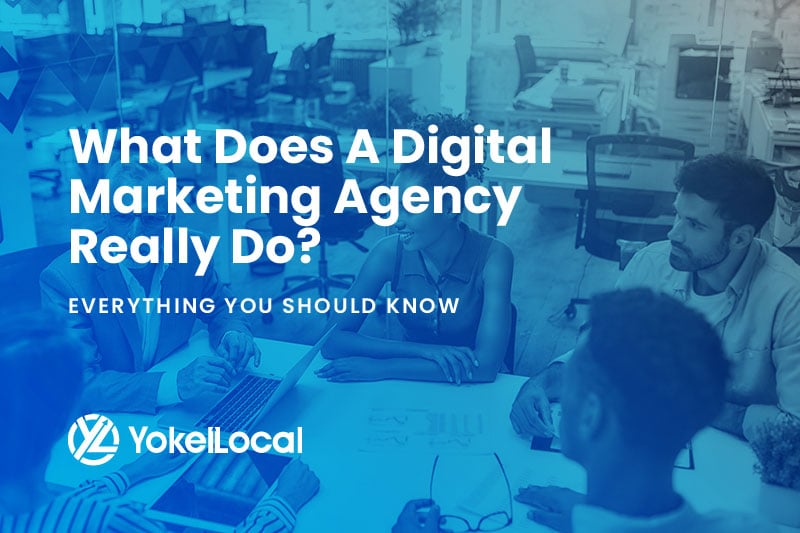Thanks to ever-advancing technology, today’s successful marketing tactics, tools, and strategies differ significantly from those of traditional marketing. While you and your marketing team may be more comfortable and familiar with traditional marketing, your company is missing profits and sales if it continues to rely on old methods to attract new business. New-school marketing is now essential if your business wants to see growth.
Old-School vs. New-School Marketing: What's the Difference?
It’s easy to think that today’s marketing is traditional marketing that has been morphed to accommodate customers and business trends. However, new-school marketing is a different form of marketing entirely. Here are four notable differences between the two:
1. Messaging
Old-school or traditional marketing tends to be “one-way” in that the message bars interaction between a company and its audience. With old-school marketing, the messages scream, “buy this!” without soliciting a response or conversation with the customer. New-school marketing, on the other hand, seeks to build a relationship with the audience through interactive, two-way messaging.
With old-school marketing, the audience isn’t able to be targeted or customized. This results in the same messaging going out to everyone who sees the advertisement. The messaging in new-school or digital marketing marketing is able to be customized to be relatable and personal. New-school marketing also allows marketers to choose the audience, the medium, and the time and day ads are seen.
2. Responsiveness
Old-school marketing has traditionally been reactionary in the sense that its messaging, the medium used, and the timing of the messaging are altered accordingly after the ads have been deployed. New-school marketing, on the other hand, is proactive in that its messaging, audience, the timing of the ads and the medium to be used are analyzed before the ad is deployed. Additional changes are then made during and after a marketing campaign.
3. Consistency
With old-school marketing, you’re not able to come out with fresh ads and content on a regular basis. With new-school marketing, the content turnaround can be as short as a few hours thanks to the automation that comes with digital marketing.
4. Costs
High-quality magazine ads, billboards, television, and radio spots cost hundreds, thousands, and even millions of dollars. With the high costs of these old-school marketing tactics, top-notch (and expensive) graphic designers and copywriters are required. New-school marketing is significantly more affordable, and many times free. New-school marketing gets your message out quickly and effectively at an affordable cost that’s budget-friendly.
What is Old School or Traditional Marketing?
According to Investopedia, marketing is defined as: “activities a company undertakes to promote the buying or selling of a product or service. Marketing includes advertising, selling, and delivering products to consumers or other businesses.”
In old-school marketing, content is blasted out to as many people as possible through television ads, radio ads, and direct mail.
Other commonly used old-school marketing strategies and tactics include: newspaper ads, ads in magazines, billboards, telemarketing, press releases, and trade shows
The Pros & Cons of Old-School Marketing
While old-school marketing is not as effective as new-school marketing, it does have pros along with its cons. These include:
Pros:
- It can still be effective when done carefully and consistently
- It can be powerful when done through certain mediums such as magazine ads and billboards
- It still provides an outlet for creativity
Cons:
- It is “one-way” with no interaction between brand and customer
- It is hard to measure
- It is hard to customize and target the desired audience
What is New-School or Digital Marketing?
New-school or digital marketing still espouses the basic concept of marketing, but instead of focusing on print, television, and radio as the main mediums, it focuses on using the Internet. New-school marketing can also be called modern or digital marketing. New-school marketing utilizes new technologies to create a holistic marketing strategy.
New-school marketing uses the strategy of inbound marketing, whereby content from various channels (print, infographics, videos, etc.) is displayed online to specified target customers along with the company’s sales and marketing funnels. Within each phase of the funnel, different strategies are utilized including content marketing, website optimization, email marketing, and social media marketing. The goal with inbound marketing is to meet prospective leads where they are currently in the sales and marketing funnels and present them with valuable information that will move them further down it.
Common digital marketing tactics and strategies include:
- Blog Posts
- Emails
- Social Media Posts
- Infographics
- Video Marketing
- Search Engine Optimization
- Affiliate Marketing
- Paid Search
- Website Design and Development
- User Experience
- Data Analytics
- Social Media Advertising
- Local Search Marketing
The Pros & Cons of New School Marketing
While new school marketing is now essential for any business, it does have pros and cons to take into consideration:
Pros:
- It provides better audience targeting
- It encourages interaction and engagement between brands and their customers
- It produces personalized, relevant content
- It offers a comprehensive marketing strategy
Cons
- It can be challenging to get up to speed with the programs, implement campaigns, and be comfortable with technology
- It requires a business to hire an outside marketing consultant
- It may not be receptive by certain audiences that aren’t tech-savvy or have no access to the Internet
4 Steps to Transition Old-School Marketing to New-School Marketing
If you’ve been doing old-school marketing, it can be difficult to transition to new-school marketing. Here are four steps to help you do just that:
Step 1: Know Your Audience
Brainstorm with your marketing and sales teams to come up with personas based on your ideal audiences. Your sales team can provide you with valuable information regarding the characteristics and habits of the customers and leads they interact with. They can even help you come up with marketing content from questions customers commonly ask. Doing interviews and focus groups as well as asking for feedback from customers can help you come up with personas and audiences you should consider targeting.
Step 2: Come Up With a Strategy
After you know your targeted audience, it’s time to develop a marketing strategy. Be sure to come up with SMART goals and concrete objectives. You should also come up with metrics you’ll want to measure. Look at your current old-school marketing strategies and determine which ones to continue to use and which ones to discard.
With SMART goals, objectives, and a targeted audience and metrics to measure, spend time researching the various new-school marketing tools, programs, and strategies. Narrow in on the ones that fit your budget and are able to do all the things your marketing strategy calls for. If you don’t have the time or lack adequate employees to properly use the programs and deploy a new-school marketing strategy, it may be worthwhile to hire a digital marketing agency to do your new-school marketing for you.
Step 3: Get Writing
Digital marketing relies heavily on regularly producing valuable, high-quality content which resonates with leads and customers at various stages of the sales and marketing funnels. To ensure that your brand’s unique voice and style are captured and information your audiences are seeking, it is best that you write as much content yourself in-house. When you write your website, blog post, email, and social media content, you have the power to decide where and when to publish it.
Before you write content, invest in a keyword tool like SEMrush or Moz to get an idea of keywords to target as you write your content. New-school marketing involves constantly producing a lot of quality content. If you don’t have the manpower or the time, hiring a content marketing professional at a digital marketing firm can take the burden of content production off your shoulders.
Step 4: Regularly Monitor Your Campaign With Analytics Software
One of the biggest advantages that new-school marketing has is the ability for campaigns to be measured and adjusted during and after the campaign’s conclusion. When you’re able to readily identify problem areas as well as strategies that are succeeding, you can optimize the effectiveness of your marketing campaign and better your sales.
If you’re doing the monitoring and analyzing in-house, research the various analytics programs out there and find the few that will measure the proper metrics. If you’re working with a digital marketing agency, they will have their own analytics software and use that for your marketing campaign.
Regardless of whether you’re doing the new-school marketing in-house or outsourcing to a digital marketing agency, be sure to check in on your campaign regularly.
Old School vs New School Marketing: Which Strategy is Right for Your Business
In today’s high-tech world, companies that use new-school marketing have an advantage. While old-school marketing isn’t as effective, it is far from being extinct. Traditional marketing can still be beneficial, if done correctly. It should, however, complement one’s new-school marketing.
Here are some things to consider whether it is worth it to shift from old-school to new-school marketing:
Audience
While most businesses should invest in new-school marketing, one’s target audience should be considered. Children, young adults, and middle-aged customers are more likely to respond to new-school marketing, but older demographics are more comfortable with old-school marketing.
Market Reach
Are you marketing to a local or global audience? With the high costs of old-school marketing, companies with a more local or regional reach may find value in a mixture of old-school and new-school marketing strategies and tactics. International businesses are better off focusing primarily on new-school marketing.
It’s a good idea to not abandon your old-school marketing. However, in order to be successful, new-school marketing should take priority.
New-school marketing isn’t an updated version of old-school marketing. Both forms of marketing use different mediums, which make them great complements of one another. With today’s technology, new-school marketing is more effective and affordable. However, old-school marketing can still be beneficial if done correctly.














